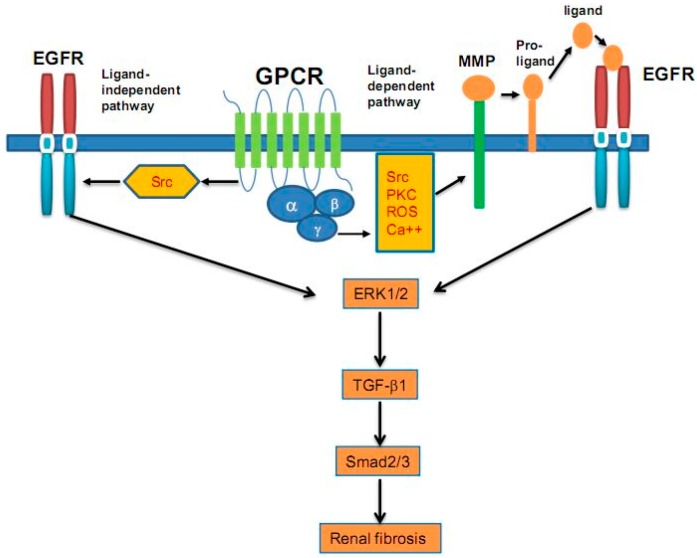Figure 1.
Signaling mechanisms of epidermal growth factor receptor (EGFR) transactivation in renal fibrosis. Upon stimulation with G protein-coupled receptor (GPCR) ligands (i.e., angiotension II), some intracellular events. Including activation of Src and protein kinase C (PKC), production of reactive oxygen species (ROS) and influx of calcium are initiated. Src can directly induce EGFR phosphorylation/activation via a ligand-independent mechanism. Src and other intracellular signaling molecules can also induce EGFR transactivation via a ligand dependent mechanism involving activation of MMPs and subsequent cleavage of proEGFR ligands to release their soluble forms. These soluble ligands bind to EGFR and induce its dimerization and activation, which, in turn, sequentially activates the ERK1/2, production of TGF-β1 and activation of TGF-β signaling pathway.

